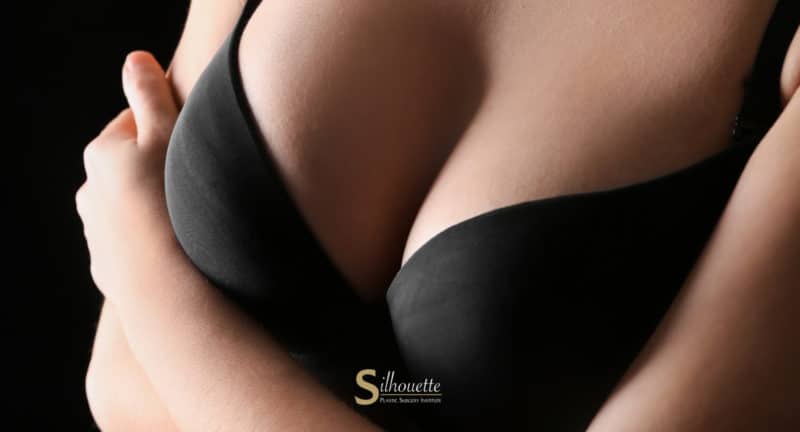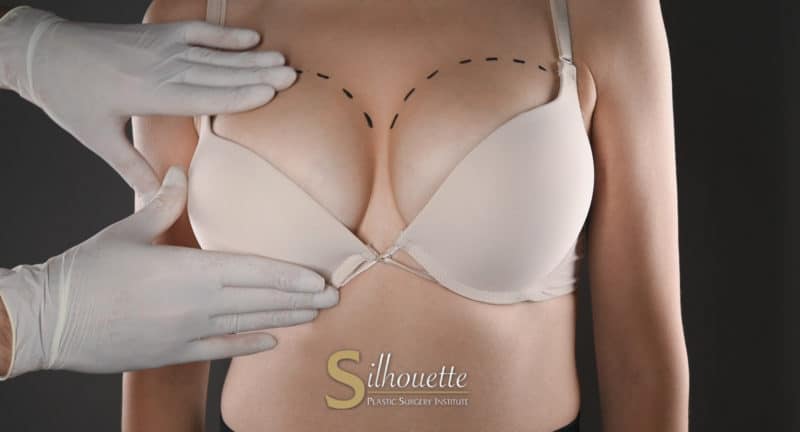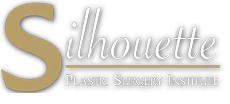Dr. Hootan Daneshmand
D Cup Breasts in Bakersfield, CA
Size D Implants in Breast Augmentation

We’ve all heard the saying: the bigger, the better. Most patients like to apply this logic when choosing an implant size before their breast augmentation surgery. But bigger is not always better when it comes to breast implant size.
In fact, there are so many factors to consider when choosing a large implant over a smaller implant. Below, board-certified plastic surgeon Dr. Daneshmand discusses all the factors that go into choosing the perfect size implant for your aesthetic goals, lifestyle, body type, and so much more.
If you’re considering size D implants, contact our Orange County plastic surgeon Dr. Daneshmand today by calling 949-359-8397.
What is the Average Cup Size in the U.S.?
The average American cup size isn’t what it used to be. According to a 2013 report, the average cup size in America jumped from a 34B to a 34DD in just 20 years. General weight gain partially explains this large jump in breast size. But breast augmentation surgery is another reason why the average American woman has larger boobs.
What Are the Different Types of Breast Implants?
At Silhouette Plastic Surgery Institute, we offer all types of breast implants, including:
- Silicone gel implants
- Saline Implants
- Gummy bear implants
Are Size D Implants Right For Me?
Very large breast implants aren’t the best option for everyone. When choosing breast implants, there are many factors to consider like implant shape, implant size, how much natural breast tissue you have, your current body size, and so much more. When you come to Dr. Daneshmand and ask to move up a couple of cup sizes, he will discuss these factors in-depth with you and also perform a physical exam.
Your Height and Weight
The first thing that Dr. Daneshmand will consider before recommending size D implants is your current height and weight. If you’re a petite person who is smaller than 5 feet 5 inches and 130 pounds, for example, size D implants may not look proportional on your body. Some women don’t have a goal of looking as “natural” as possible, and that is certainly their choice. But most women want the most natural-looking results from their breast augmentation. So in order to achieve the most natural look possible, petite women may have to choose smaller implants.
Your Breast and Chest Dimensions
Another factor that Dr. Daneshmand will consider when recommending breast implant size is the current measurements of your breasts and chest wall. Size D implants may not be the best option for someone with incredibly small breasts and a narrow chest size. In cases like this, Dr. Daneshmand may advise increasing breast volume by only 2 cup sizes. For example, if you’re an A cup, it’s very possible to immediately move up to a D cup, but it may not be best for your current dimensions and body type. So Dr. Daneshmand may recommend going from an A cup to a C cup instead.
How Much Natural Breast Tissue You Already Have
Another factor that goes into breast implant sizing is how much tissue you already have in your natural breasts. If you already have plenty of tissue, size D implants may not be the right size for you. Lots of breast tissue plus very large implants may result in a DD cup size or larger. If your goal is a D cup size, Dr. Daneshmand will examine your natural breasts and then recommend an implant volume that will give you your desired look.
Your Skin Elasticity
Breast skin elasticity, also frequently referred to as the breast skin envelope, is another important factor to consider when choosing breast implant size. Basically, if you want size D implants, your skin has to be stretchy enough for Dr. Daneshmand to insert it into the breast skin envelope. Women who have had multiple pregnancies, multiple births, and weight fluctuations often have stretchier, looser skin that can support larger breasts.
So if your skin elasticity won’t support larger implants, then smaller breast implants are the way to go.
Your Lifestyle
Your lifestyle is another factor to consider when choosing implant sizes. If you lead a very active lifestyle, it’s important to remember that large breast implants can get in the way. Basically, larger breasts are more weight that you have to carry around. If you’re a runner, a bodybuilder, an active mother, etc., the back and shoulder pain that may come with size D implants may not be worth it for you.
The Final Breast Size and Aesthetic You Want
Finally, Dr. Daneshmand always takes into account the desired size and aesthetic of breasts that his patients want. Even if he can’t recommend D cup breast implant sizing for some patients, he will do his best to deliver the best breast augmentation results possible with a reduced implant volume.

How Does Implant Size Affect Cup Size?
Bra cup sizes tend to be very inconsistent across brands of bras. So even though a specific cup size can give your plastic surgeon a good idea of your desired breast size, it’s not the best metric to use for a breast augmentation. Plastic surgeons use cubic centimeters to measure breast implant size. Generally, each 150cc to 200cc of implant volume equals an increase in 1 cup size. Listed below are the average cup size changes based on the implant volume you request.
- A cup to B cup: 250cc to 300 cc
- A cup to C cup: 300cc to 350cc
- A cup to D cup: 370cc to 430cc
- B cup to C cup: 250cc to 350cc
- B cup to D cup: 350cc to 400cc
- B cup to DD cup: 400cc to 450cc
- C cup to D cup: 300cc to 350cc
- C cup to DD cup: 370cc to 450cc
- C cup to E cup: 450cc to 550 cc
- D cup to DD cup: 300cc to 400cc
- D cup to E cup: 450cc to 600cc
What are Breast Implant Profiles?
Implant size isn’t the only thing you have to think about before a breast augmentation. You have to consider the implant profile too. But what does implant profile mean? Basically, if you stand sideways in the mirror, you’ll get a good look at your breast implant’s profile. There are many types of profiles to choose from, including:
- Low Profile Implants appear the flattest from a side view because they have minimal projection. These implants are generally the best option for people with a larger breast width diameter.
- Moderate Profile Implants have the most natural projection. So if you’re going for the most natural look possible, these profile implants may be the best option for you. Additionally, moderate profile implants look great on people with narrower chests.
- High Profile Implants are very round implants that have the most projection. They probably look the least natural out of all the other implant profiles. High-profile breast implants would also look good on someone with a narrow chest.
When choosing an implant profile, it’s important to remember that as you increase breast volume, the breast projection will also increase.
Risks and Side Effects That Come With Larger Implants
Very large implants naturally come with more risks and side effects compared to smaller implants. It’s important to be fully informed of these possible risks before going under the knife.
As previously stated, larger breast implants naturally come with more pain and discomfort while exercising and performing your daily activities. A larger implant size can also lead to breast sagging, nipple numbness, rippling, capsular contracture, and sometimes damaged breast tissue. Improperly fitted breast implants or implants that are too large for your body type may require additional surgery such as a breast revision surgery or even a breast lift to correct sagging.
So if you’re desiring breast augmentation surgery, it may be best to start smaller than size D implants. That way, you can always increase volume in the future.

Call Silhouette Plastic Surgery Institute Today
If you’re wondering if size D implants are best for you, your body, and your lifestyle, board-certified plastic surgeon Dr. Daneshmand is the best person to consult. He has more than 30 years of experience in giving his patients the breasts and bodies of their dreams.
He is passionate about making sure all patients leave his office feeling more confident and beautiful than when they first came in. To make an appointment, call 949-359-8397 today.
